Art World
‘We Are Talking About Rebuilding Half a City’: How Beirut’s Cultural Community Is Recovering Three Months After the Deadly Blast
Lebanese artists, collectors, and art dealers continue to find hope through art—and sales to overseas buyers.
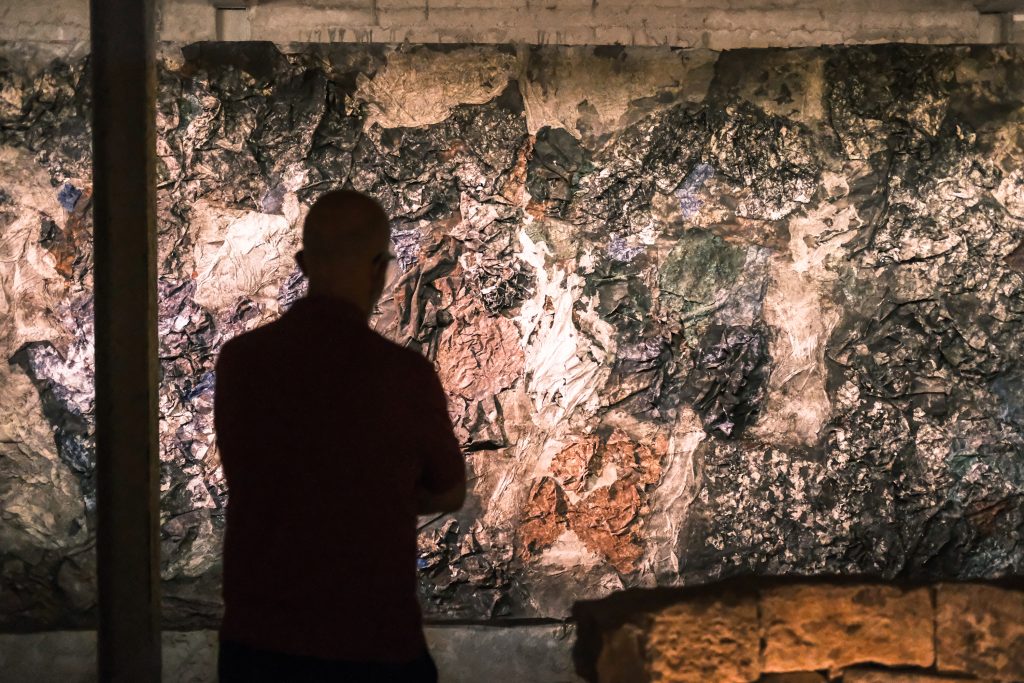
Lebanese artists, collectors, and art dealers continue to find hope through art—and sales to overseas buyers.

Rebecca Anne Proctor

It’s been just over three months since a pair of explosions ripped through Beirut, leaving the city reeling. Inside the city’s Sursock Museum, an elegant stone and marble colonnade is such an alluring sight—evocative of Beirut’s golden age and the institution’s exemplary collection—that, for a moment, it’s easy to forget the blown-out door and window frames lying on the floor.
With no support from the government, a collapsed economy that has made financial hardship a normal part of life, and a spike in coronavirus cases that has overloaded hospitals, the Lebanese have been left to fend for themselves, rebuilding and reconstructing their beloved city with grit and determination.
“We need a year to reconstruct the museum and reopen,” said Zeina Arida, director of the Sursock Museum, which is dedicated to the work of modern and contemporary Lebanese artists. Situated 800 meters from the port, the institution was among more than 100 museums, galleries, and artist studios that were severely damaged in the blast. The Sursock now needs $3 million to restore its building, of which it has raised $674,722 to date.
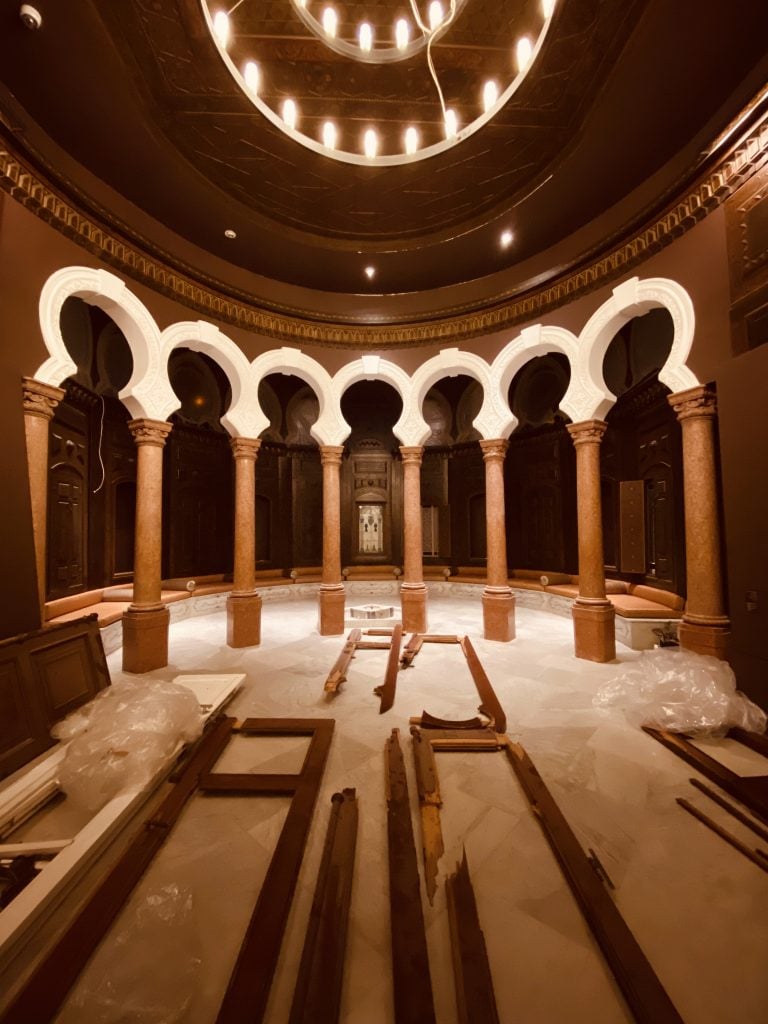
The interior of the Sursock Museum, Beirut in the midst of recovery. Photo: Rebecca Anne Proctor.
“If we secure the funding before the end of 2020, then we could reopen in the fall of 2021,” Arida said. “We are considering reopening the museum in phases. But nothing is clear to us just as it is to many museums and institutions in Lebanon and in the world.”
Lebanon has spent the past year moving from one crisis to the next. October 17 marked one year since the country’s popular uprising, which forced Prime Minister Saad Hariri to resign. After a year of protests, the streets are quiet—but daily life, especially after the August 4 explosion, remains a struggle.
Pharmacies are running out of medicine, petrol stations have been rationing supplies, and stores have put up plexigass barriers to guard against theft. People rummaging for food in the city’s garbage bins has become a common sight. The country is also under lockdown until the end of the month to limit the spread of the virus.
“The situation in Beirut is dire,” said Lebanese art collector Basel Dalloul, founder of the Dalloul Art Foundation in Beirut. “The banking system has collapsed, so getting paints, brushes, and other materials is difficult now. The blue-chip artists will always do well because they have markets outside of Lebanon. It’s the younger artists that are struggling, many of whom now need to find regular jobs in order to survive.”
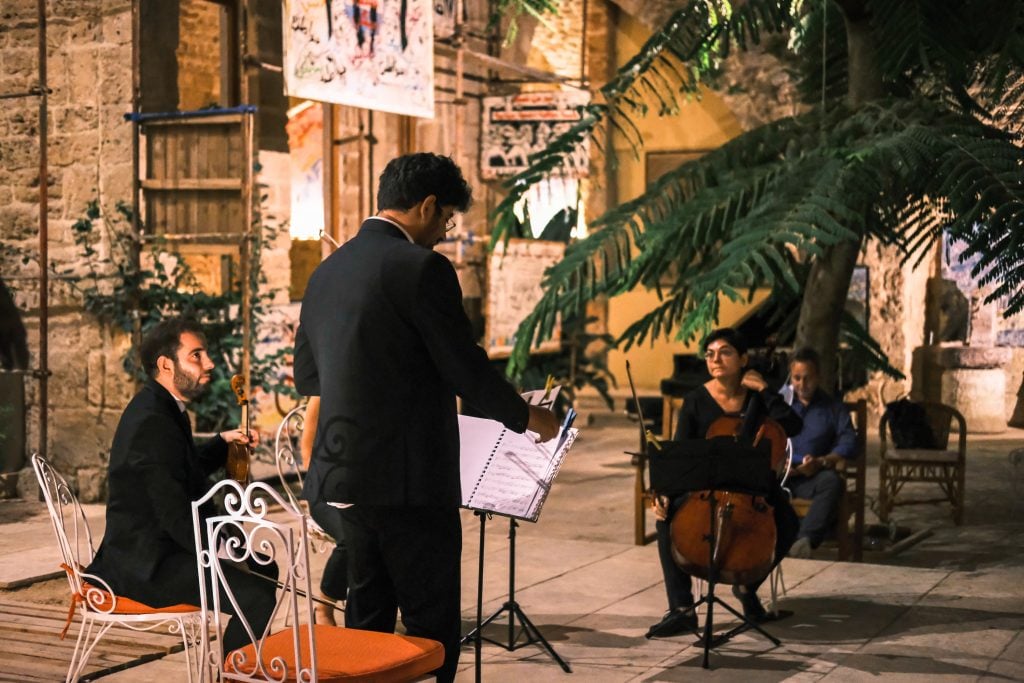
Opening of “Beirut Year Zero.” Photo: Karim Sakr.
Despite the trauma that lingers in the air, the Lebanese—survivors of invasions, wars, and explosions—have demonstrated an ability to adapt. In Mar Mikhaël and Gemmayze, two of the hardest hit neighborhoods, rubble has been cleared from the street, construction workers are rebuilding, and a handful of businesses—including a new branch of the famed Lebanese restaurant Tawlet—have opened.
Other spaces have transformed to meet urgent needs. Arthaus, a boutique hotel in Gemmayze that was due to open on August 4 and is now undergoing repairs, staged a charity exhibition of work by 54 artists, many created just after the blast. They are now being sold through Christie’s, with 50 percent of the proceeds going to the Lebanese Red Cross and the Arab Fund for Arts and Culture.
Naila Kettaneh-Kunigk, whose Galerie Tanit was destroyed during the blast, staged an exhibition among the ruins of the gallery featuring two murals by Abed Al Kadiri. The proceeds went to support Bassma, an NGO working in post-blast relief efforts.
Another glimmer of renewal can be found at Saleh Barakat Gallery, where a show of powerful paintings of war by Beirut-based Iraqi-Kurdish artist Serwan Baran are on view. Other new initiatives include AD Leb, a virtual art and design gallery showcasing unique pieces by Lebanese designers and artists founded by Gaïa Fodoulian, who died in the explosion not long before the project’s launch. Her mother, art dealer Annie Vartivarian, is now leading the platform.
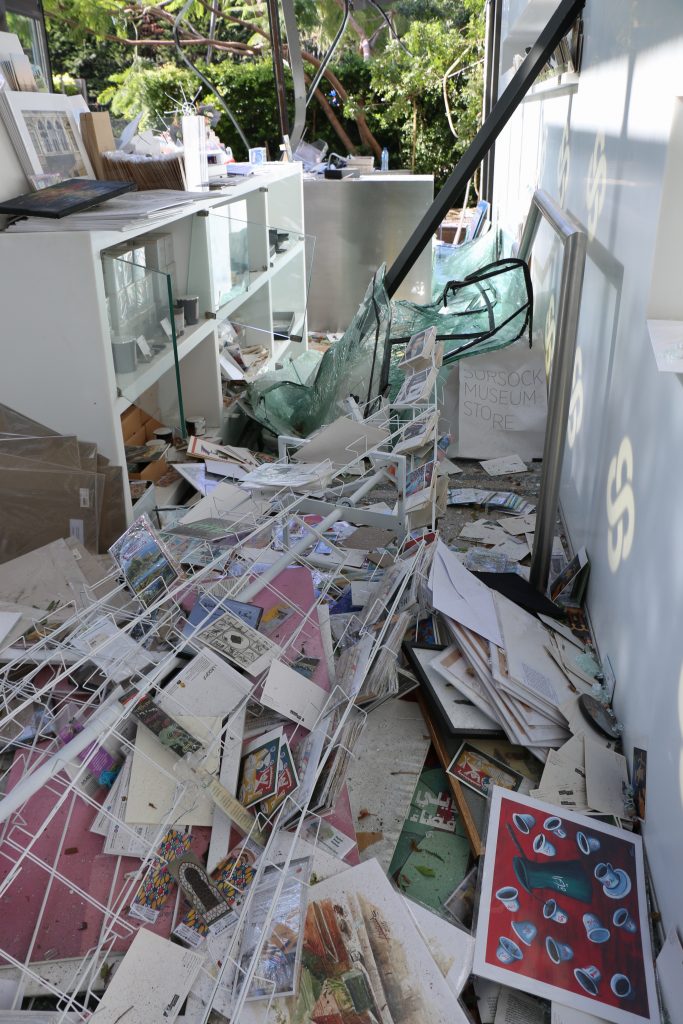
The Sursock Museum store after the blast.
One of the biggest challenges facing Lebanese artists and dealers today began well before the blast, but has only worsened in its wake: adapting to the collapse of the country’s banking system, now known as the great Lebanese Ponzi scheme. Lebanese banks paid out inflated interest rates to big depositors from the interest earned on the money the banks lent to the state, setting up a situation whereby individuals would make money off of increased public debt.
In October 2019, after Lebanon’s finances were stretched to the brink, the Lebanese pound lost 80 percent of its value. All foreign currency was confiscated by Lebanese banks, transforming US dollars in the system before the crash into what the Lebanese now call “lollars.”
Many locals are now trying to use their “lollars”—often referred to as “monopoly money” because they are worthless outside of Lebanon—to buy assets, including art and real estate, that could one day be sold for “fresh money” (US dollars that came from abroad after the crash), the most valuable currency in Lebanon.
All prices can be adjusted to two different conversion rates of the Lebanese pound to the dollar: the bank rate, which is currently 3,900 to the dollar, or the black market rate, which fluctuates daily. The result is a complex, tiered system that changes based on what currency the buyer is offering. “We had to adapt our pricing in order to suit the people who are carrying Lebanese pounds, lollars, and those who can still pay in what we call fresh dollars,” said dealer Saleh Barakat.
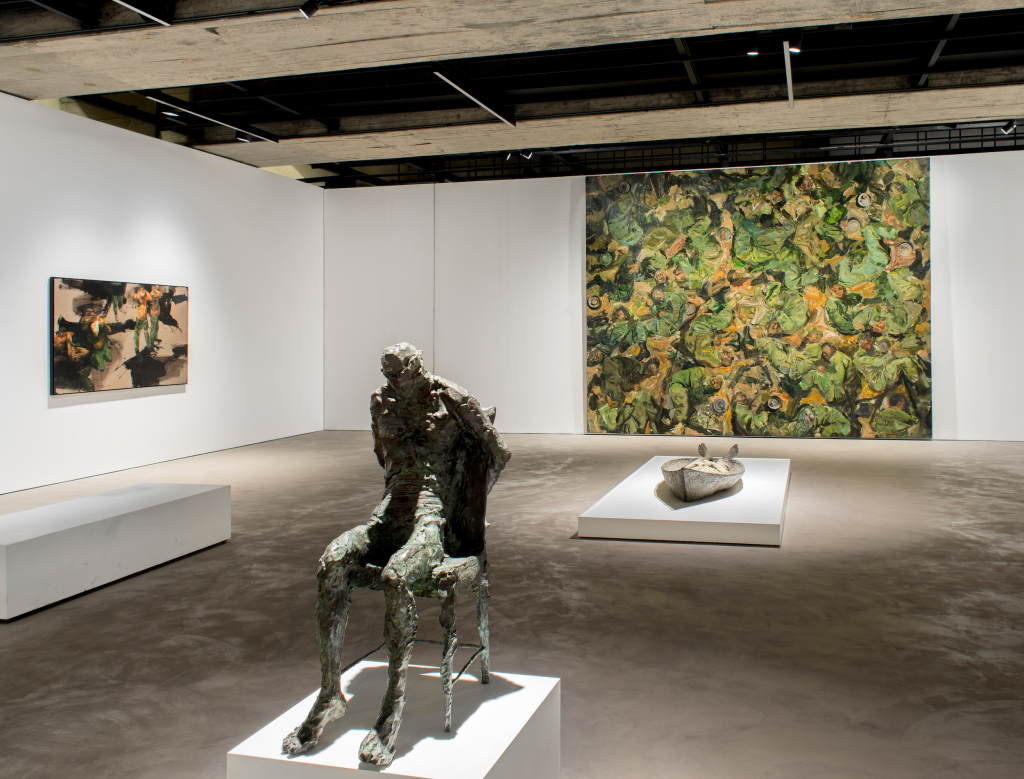
Installation view of “A Harsh Beauty” at Saleh Barakat gallery. Photo: Paul Hennebelle.
Some artists are now selling their work in lollars for 250 percent of face value so that even if the currency is worthless internationally, they at least have more purchasing power locally. The lucky ones with a strong international collector base, meanwhile, will only sell their work for fresh money from abroad.
While selling art is a particularly complex business right now, buying it is more appealing than ever. In the face of collapsing banking and political systems, some Lebanese are accruing art as a way to safeguard their money.
“Some people wanted to diversify their financial risk by buying luxury items instead of keeping their money in deposits in the banks,” Barakat said. “Many people would prefer to see their money in the form of a painting on the wall instead of having it as a virtual number in the bank.”
Barakat stresses that his gallery had to take precautions when making such sales. “We don’t want art to become an evasion of the banking system, this is not good for Lebanon or the art market in general,” he said.
Some are also still collecting for sheer pleasure. “I have continued buying art and have bought several pieces by Lebanese photographers as well as by artists abroad,” said Lebanese lawyer Tarek Nahas, who has an expansive collection of Middle Eastern and international photography in Beirut.
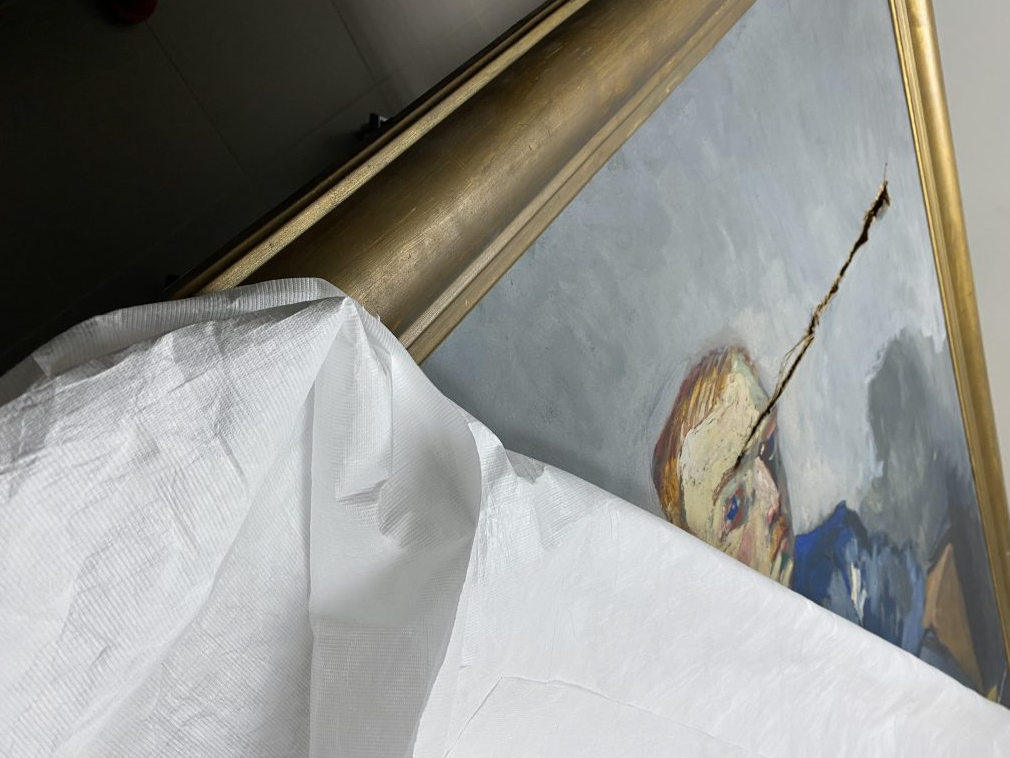
One of the damaged paintings at the Sursock Museum in Beirut. Photo: Rebecca Anne Proctor.
It is clear that sales are tougher to make than in 2019. But without the cost of art fairs and rotating exhibitions, most galleries are keeping overhead low and counting on international buyers to provide much-needed cash. The galleries most likely to survive now are those that have developed an international client base. “We are relying more on clients in the Gulf and internationally,” Barakat said.
Day-to-day business has become so challenging that some artists and dealers are considering leaving Lebanon for London or elsewhere in the Middle East. But are committed to staying put.
“The young artists are very much involved in Lebanon, in rebuilding the country and in the so-called revolution,” Nahas said. “Good artwork will be created by young Lebanese artists, but we will only know about this work and its value in a few years after we have a chance to digest all the changes that are happening in this country.”
Lebanese artists underscore the importance of the international art market yet remain steadfast in their belief that the country is a vehicle for creating their best work.
“I belong to the generation of artists who owe their careers to the internationalization of the Arab art market through the platforms of the Gulf,” said artist Alfred Tarazi. “The crisis on a personal level has deepened my commitment to Lebanon as an essential platform of expression in the world. However, this platform depends on the world more than ever in order to survive.”
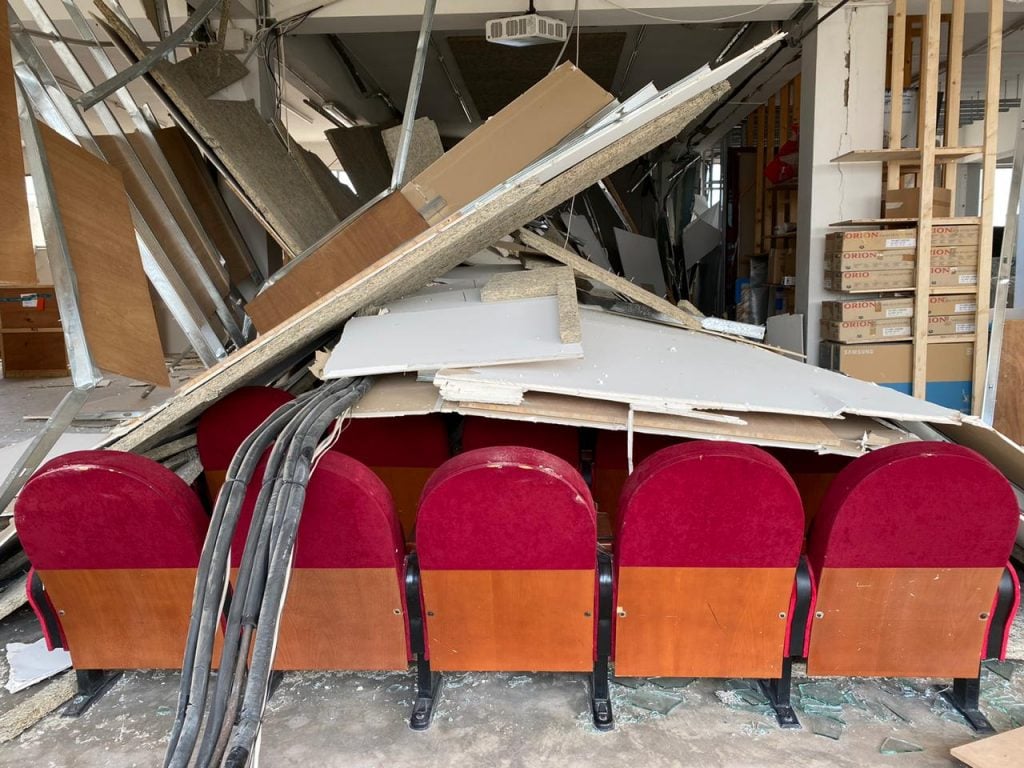
Sfeir-Semler Gallery damages after Beirut’s blast. Courtesy of Sfeir-Semler Gallery Beirut, Hamburg.
As for Beirut’s cultural institutions—many still bleeding from the blast—financial support is greatly needed. In addition to auctions and other creative fundraising initiatives, the International Alliance for the Protection of Heritage in Conflict Areas (ALIPH) donated money to the National Museum of Beirut, the Sursock, and several other institutions. While ALIPH announced it would provide $5 million, it has only been able to approve $2.3 million worth of projects to date, in part because it must transfer funds in small batches due to monetary controls in Lebanon.
Winter is also on the horizon, a period when heavy rains are commonplace. Many worry about the fate of the heritage buildings and homes in the midst of reconstruction.
“We need to fundraise on the international level because the money that we need in order to repair and reconstruct needs to arrive in fresh money,” Arida said. “We are still waiting for more funding. We are talking about rebuilding half a city. We still need billions of dollars.”